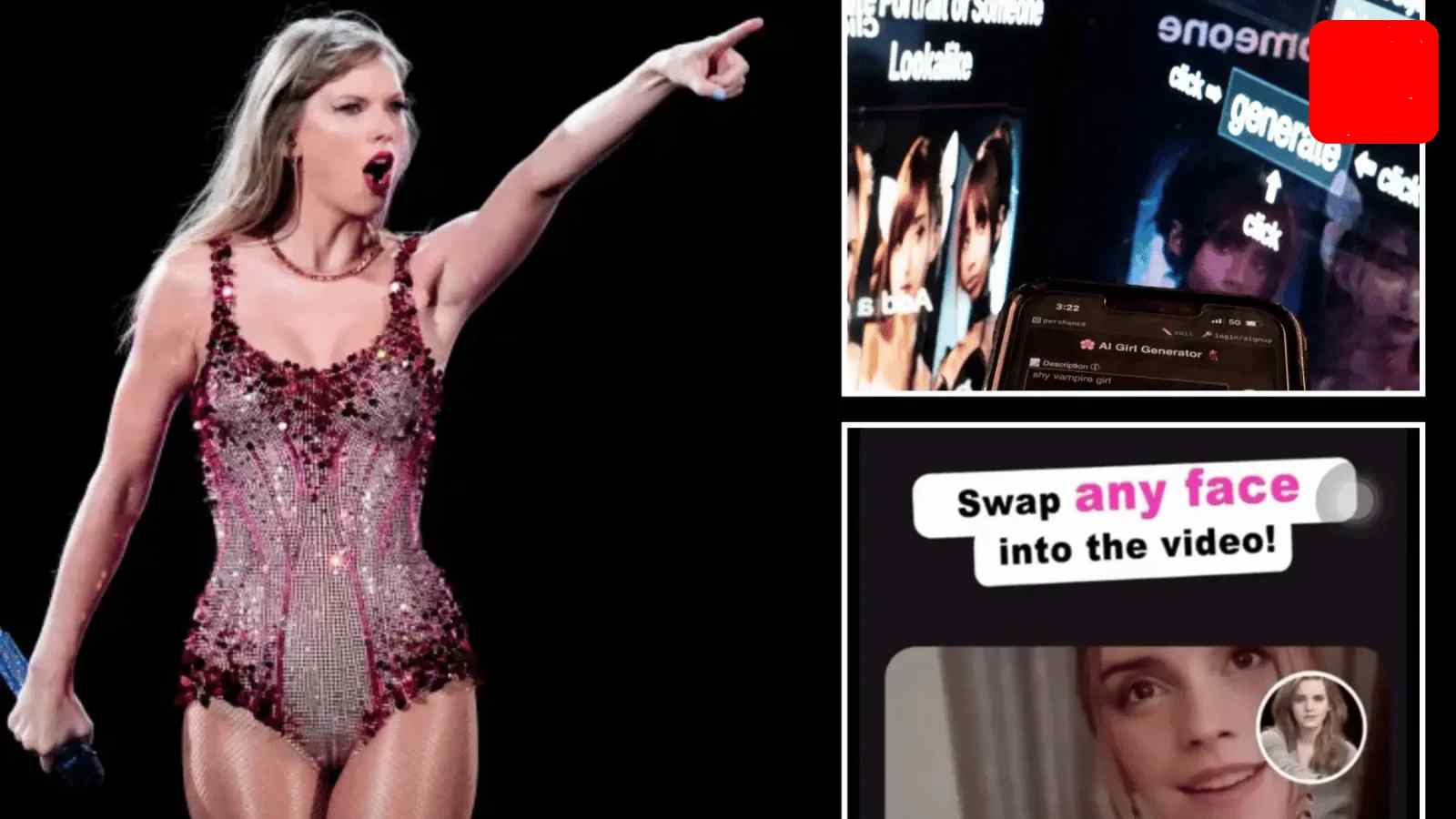Taylor Swift: The public sharing of such images without consent not only violates ethical standards but also breaches legal boundaries. In this case, the controversy surrounding Taylor Swift’s AI pictures highlights the need for stricter regulations regarding the distribution and creation of non-consensual digital content.
Swift fans can now relax knowing that Taylor Swift is once more searchable on X, the social media network that was formerly Twitter. This comes after deepfake, sexually explicit artificial intelligence photographs started making the rounds online.
A website that produces fictitious erotic content posted the disgusting artificial intelligence-generated photographs online last week, and they quickly went viral. Wearing Kansas City Chiefs apparel, Taylor was shown in the pictures in provocative sexual poses during a football game. The New York Times reports that one of the pop star’s unsettling photos was reported 47 million times before it was removed.
Taylor swift ai twitter

Later, the pictures were removed from the Internet entirely. Nineteen hours later, X momentarily prohibited users from looking up Taylor’s name on the platform. When fans attempted to search for “Taylor Swift” on X on Monday morning, the following notice appeared: “Something went wrong. Try loading again. However, her reputation has already recovered, and followers may once more receive news updates on the celebrity.
Taylor swift ai pictures viral reddit
I’ve seen the images and they’re pretty vanilla – basically a ‘Taylor Swift’ head on a few AI poses. But more important than that, even if .
Taylor swift AI Photos chiefs
Earlier on the weekend, X pulled the plug on looking for the much searched Swift(Deepfake) after AI generated explicit images of the performer proliferated all over social media. Deeply disturbing, the deepfakes kept popping up as soon as they were excavated off one feed or another. So, X took the nuclear option.
What happened with Taylor Swift AI?
What happened to Taylor Swift? On Wednesday, AI-generated, sexually explicit images began circulating on social media sites, particularly gaining traction on X. One image of the megastar was seen 47 million times during the approximately 17 hours it was live on X before it was removed on Thursday.
Why did Spotify remove Taylor Swift?

Here are some of the issues the Taylor Swift had: Spotify pays artists royalties based on their share of total streams on the platform. At the time in 2014, Spotify royalty rates were considered low, averaging around $0.006 to $0.0084 per stream. Swift was unhappy with how little Spotify pays artists.
The Need for Legislation
The incident involving Taylor Swift sheds light on the pressing need for legislation addressing the accessibility and affordability of deepfake technology. Lawmakers stress the importance of establishing safeguards to protect individuals, whether they are public figures like Taylor Swift or young people across the nation.
Social Media’s Responsibility
Despite social media platforms actively removing content, the incident raises questions about the responsibility of platforms in preventing the spread of deepfake images. X’s commitment to monitoring and addressing further violations is crucial, but the challenge persists in staying ahead of the technology’s rapid evolution.
Will Taylor Swift Take Legal Action?

The silence from Taylor Swift on the issue adds a layer of intrigue to the controversy. Reports from the Daily Mail indicate her team’s consideration of legal action against the site responsible for publishing the explicit images. The source emphasizes the shock and disgust over the violation of privacy and advocates for the removal of such images from all platforms.
Also Read: Taylor Swift Deepfake Controversy Stricter Regulations
Public Reaction and Support

Swift’s admirers, known as Swifties, have expressed their displeasure and indignation over the incident. They intervened on social media platforms, stifling the trending topic “Taylor Swift AI” with irrelevant messages to demonstrate their support for the pop singer. This incident highlights the negative impact of deepfake technology on individuals and the need for collective action.

